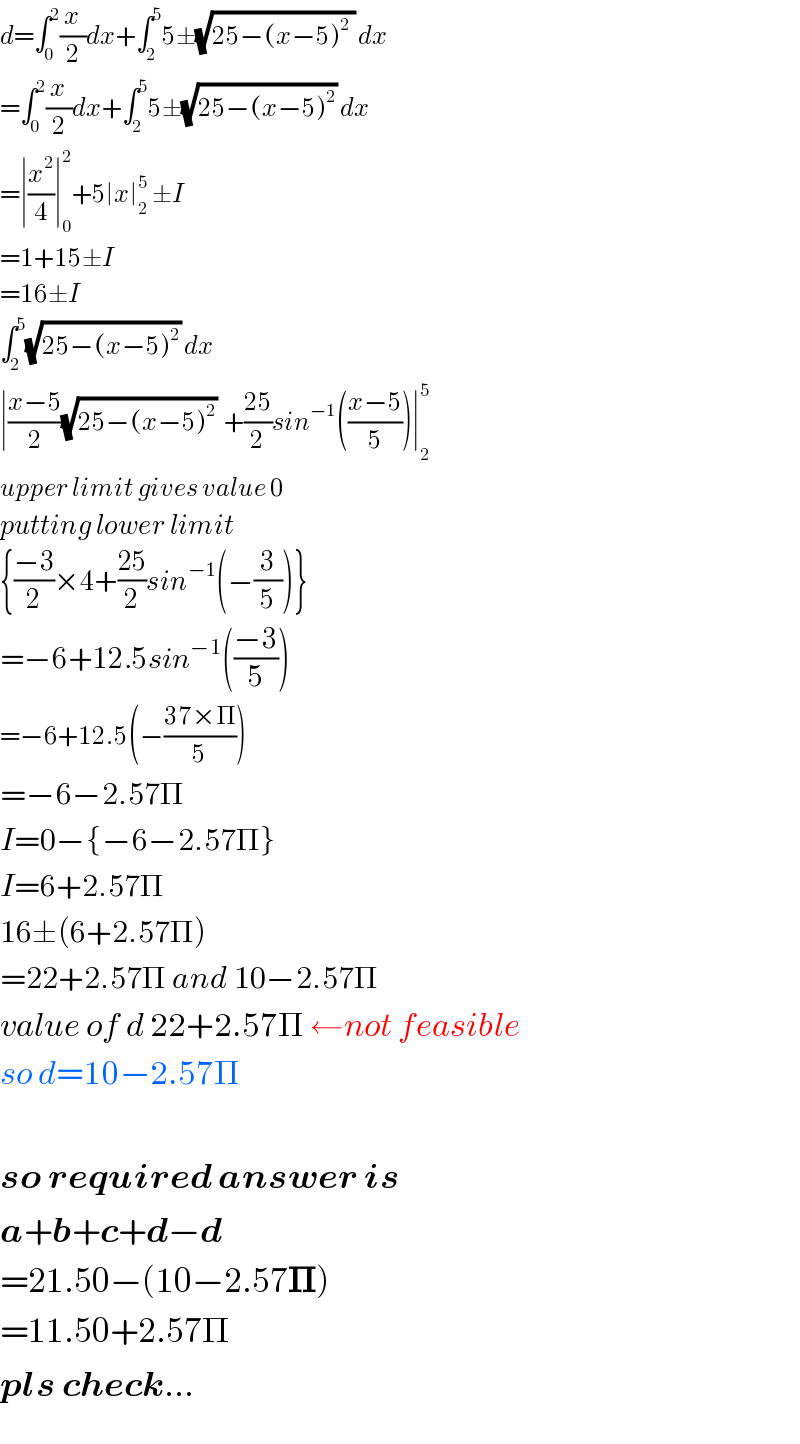
Question and Answers Forum
Question Number 43825 by Necxx last updated on 15/Sep/18

Answered by tanmay.chaudhury50@gmail.com last updated on 17/Sep/18

Commented by tanmay.chaudhury50@gmail.com last updated on 17/Sep/18

Commented by tanmay.chaudhury50@gmail.com last updated on 17/Sep/18

Answered by tanmay.chaudhury50@gmail.com last updated on 17/Sep/18

